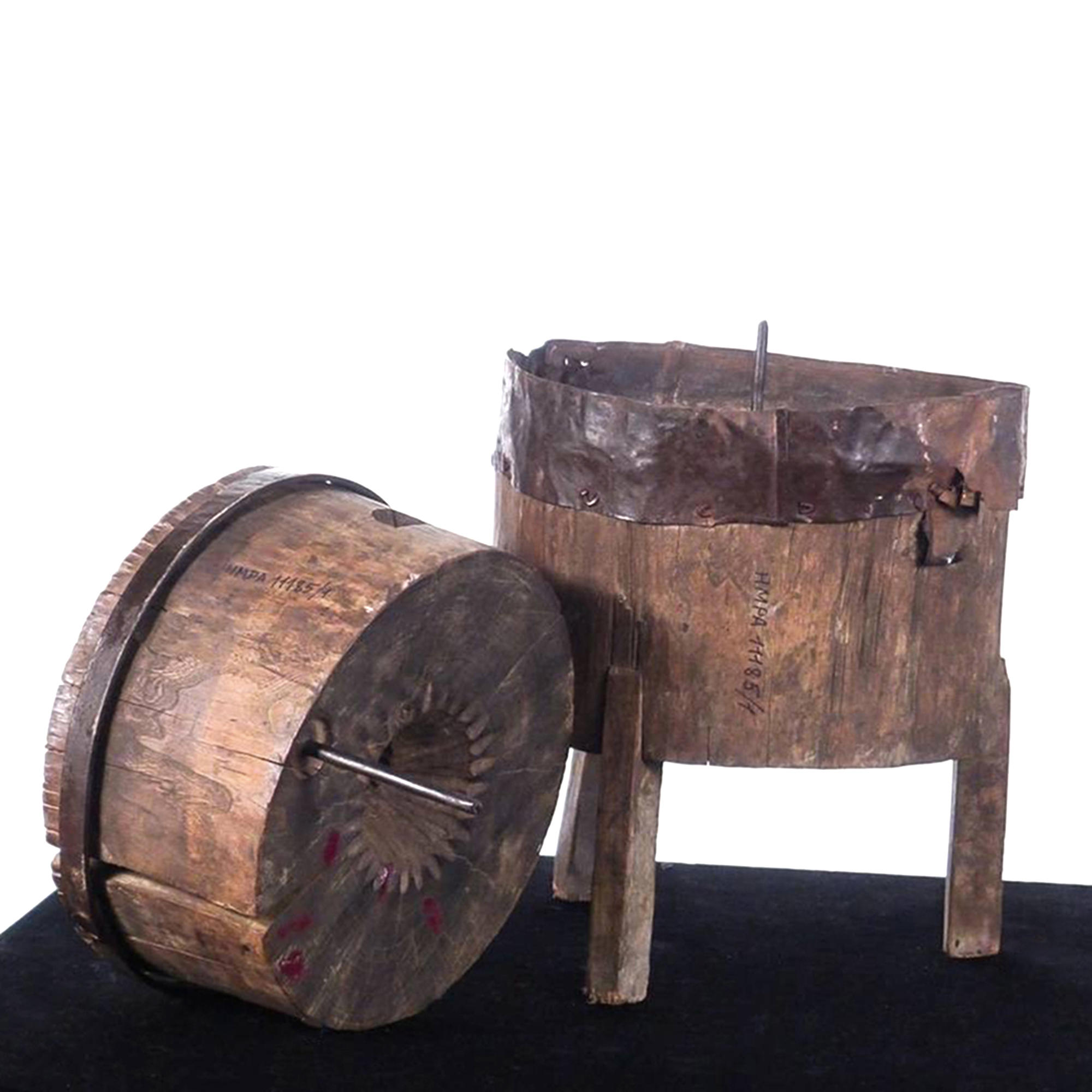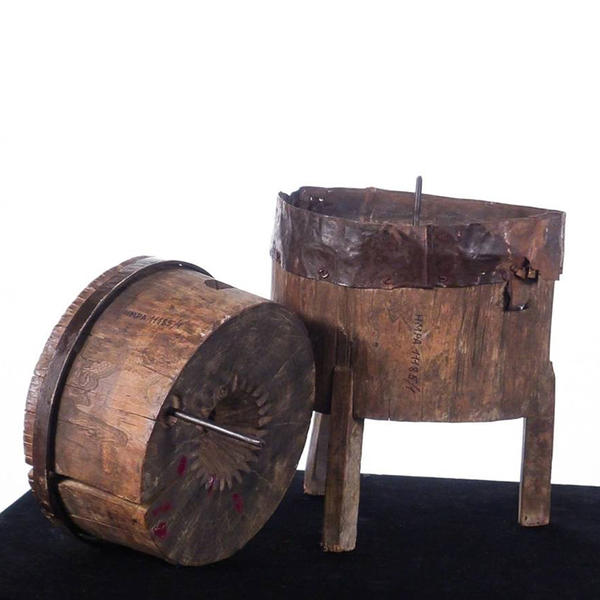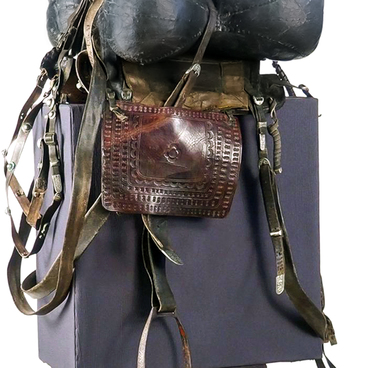People learned to grind grain into flour back in ancient times. Scholars believe that humankind began to make flour with most primitive implements as early as during the Neolithic age, ca. 9 thousand years ago.
Hand mill
Время создания
Late 20th century
Техника
Wood, metal. Carving, forging
#1
Hand mill
#4
#2
To process grain, Adyghe used several implements. First, in order for grain to be shucked, it was loaded into wooden mortars and only then sent to big mills or hand mills.
#5
English explorer Edmund Spencer, who visited the Adyghes in the middle of the 19th century, wrote:
‘Their mills for grinding corn, usually termed horse-mills, are equally primitive, being situated under the earth, with a wheel at the top, which is turned by a horse: the man who brings corn to grind must also bring a horse to turn the wheel; and, as there is no money in circulation, they pay the owner for the use of his mill in grain. The lighter seeds, such as millet (the favourite food of a Circassian), is generally ground by the women, at home, with the common hand-mill’.
#7
The body of hand mills was made from wood, while the grinder could be of two types – wooden for coarse-ground flour and stone for finer flour.
#8
The traditional diameter of the grinder was approximately 70 centimetres, so the mills were not too cumbersome and were convenient to use at home. At the same time, their design was such that it allowed grinding any types of cereals and grains without applying too much effort.
#9
The main grain cultures of the Adyghe people were millet and barley. They were usually harvested in September with scythes and sickles. Barley usually served as cattle fodder, for horses in particular. Millet was the staple food of Circassians themselves.
Rather than bread, the Adyghe diet gave preference to thick millet gruel, kasha, or pshastey [пIастэ] in the Adyghe language. It was served as a side dish to practically all main dishes - meat, dairy and vegetables. It was cooked in a very simple way: well washed cereal was put in pure water without salt and boiled on a medium heat until it became soft. Then, on a low heat and stirring, it was brought to the right dense consistency.
Millet was also used to bake mejaj, similar to bread, and to make kh’elau, a sweet dense confection which tasted much like halvah. Wheat flour was rarely used for cooking, mainly for baking traditional cheese pies, guubat.
In the 16th century, maize appeared in the Adyghe diet. It was called natryf in the local language which can be translated as “food of the Narts” (heroes of the local epos). By the beginning of the 20th century, maize had become the “queen” of meals practically ousting millet.
Rather than bread, the Adyghe diet gave preference to thick millet gruel, kasha, or pshastey [пIастэ] in the Adyghe language. It was served as a side dish to practically all main dishes - meat, dairy and vegetables. It was cooked in a very simple way: well washed cereal was put in pure water without salt and boiled on a medium heat until it became soft. Then, on a low heat and stirring, it was brought to the right dense consistency.
Millet was also used to bake mejaj, similar to bread, and to make kh’elau, a sweet dense confection which tasted much like halvah. Wheat flour was rarely used for cooking, mainly for baking traditional cheese pies, guubat.
In the 16th century, maize appeared in the Adyghe diet. It was called natryf in the local language which can be translated as “food of the Narts” (heroes of the local epos). By the beginning of the 20th century, maize had become the “queen” of meals practically ousting millet.
читать дальшескрыть
00:00
00:00
1x
Hand mill
Время создания
Late 20th century
Техника
Wood, metal. Carving, forging
Открыть в приложении
Поделиться



